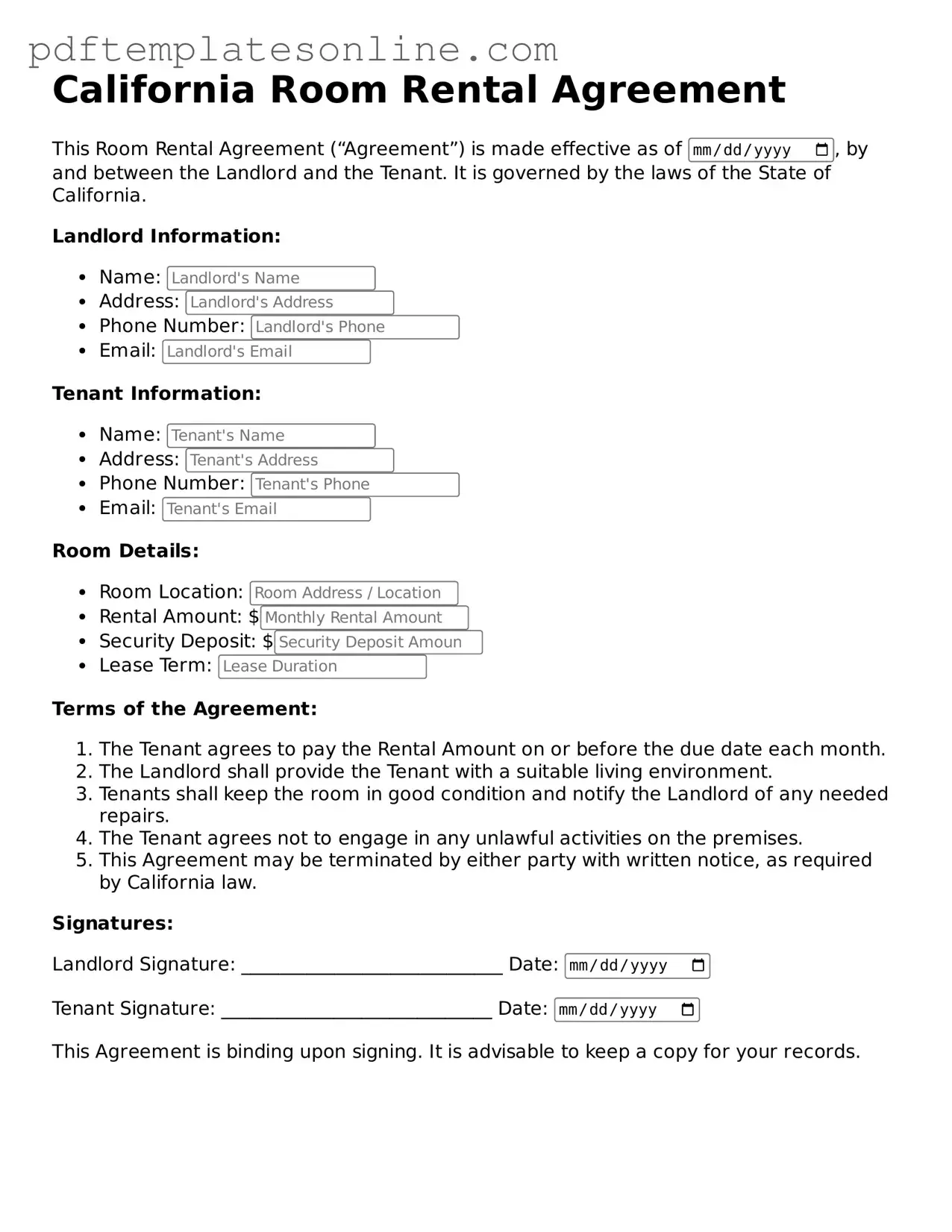Filling out the California Room Rental Agreement can be straightforward, but many people make common mistakes that can lead to confusion or disputes later on. One frequent error is not providing accurate personal information. It’s essential to ensure that names, addresses, and contact details are correct. A simple typo can create issues when trying to reach someone or when legal matters arise.
Another mistake often seen is the failure to read the entire agreement before signing. Some individuals rush through the process, overlooking important clauses or conditions. This can lead to misunderstandings about responsibilities, rent due dates, or security deposit terms. Taking the time to read the entire document can prevent future complications.
In addition, people sometimes forget to specify the rental period. Whether it’s a month-to-month agreement or a fixed-term lease, clarity is crucial. Leaving this section blank or vague can lead to disputes about when the rental agreement starts and ends.
Many individuals also neglect to document any existing damages in the rental unit before moving in. Without a clear record, it may become difficult to prove that certain damages were present before the new tenant took possession. Taking photos or writing a detailed description can protect both parties.
Another common oversight is not discussing or including utilities in the agreement. Sometimes, tenants assume that certain utilities are included in the rent, while landlords may expect tenants to cover them. Clearly outlining who is responsible for which utilities can prevent misunderstandings.
Lastly, people often overlook the importance of signing and dating the agreement. An unsigned document can be considered invalid, leaving both parties without legal protection. Always ensure that all parties involved have signed and dated the agreement to make it official.
